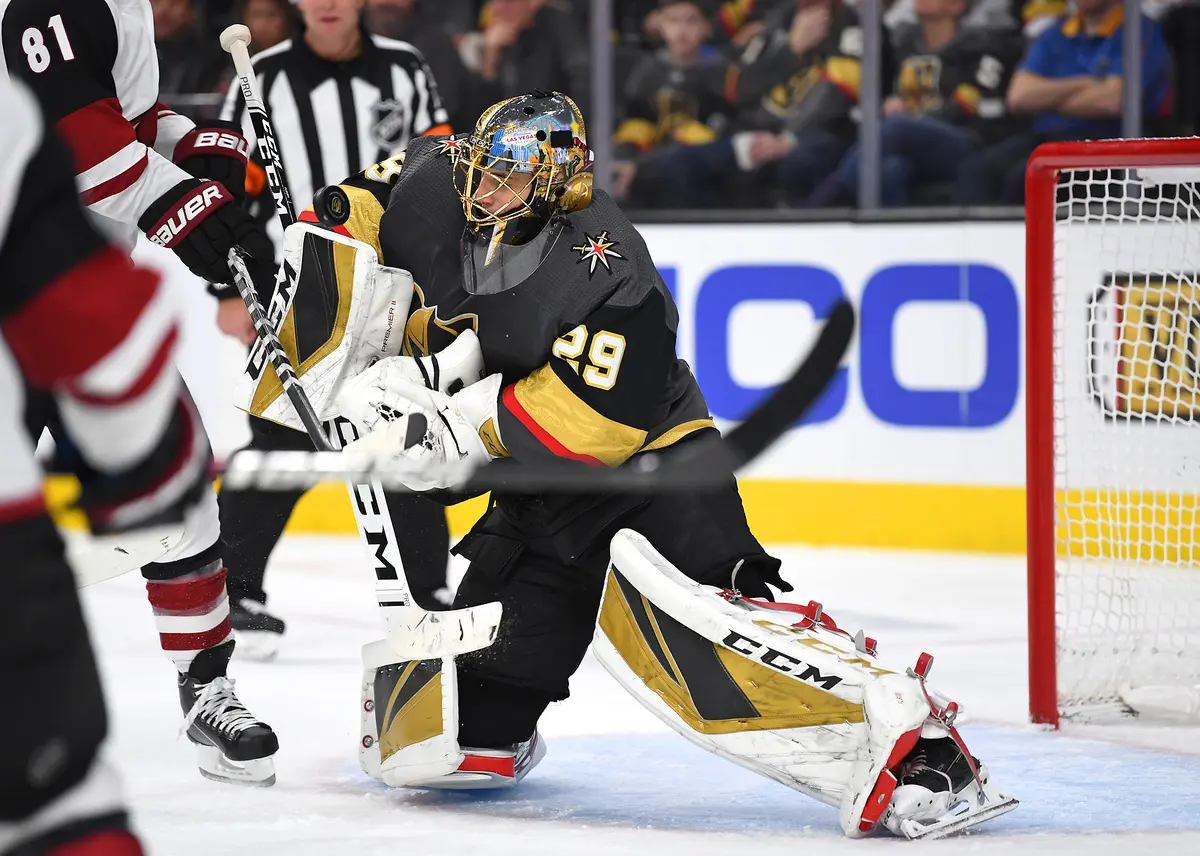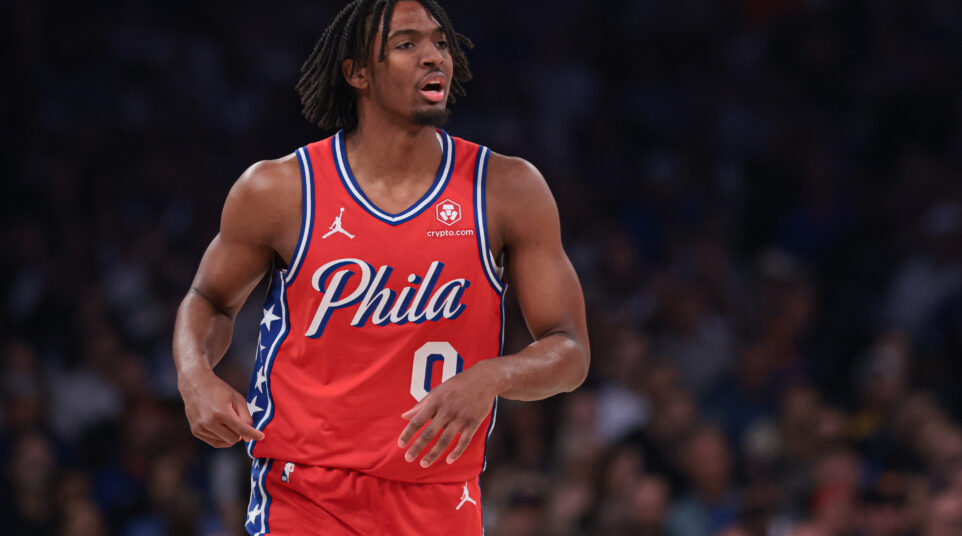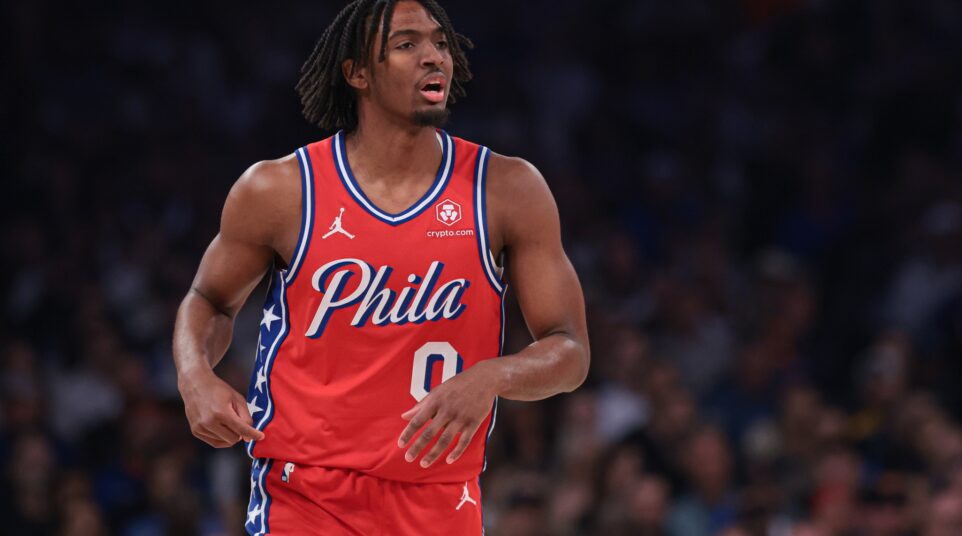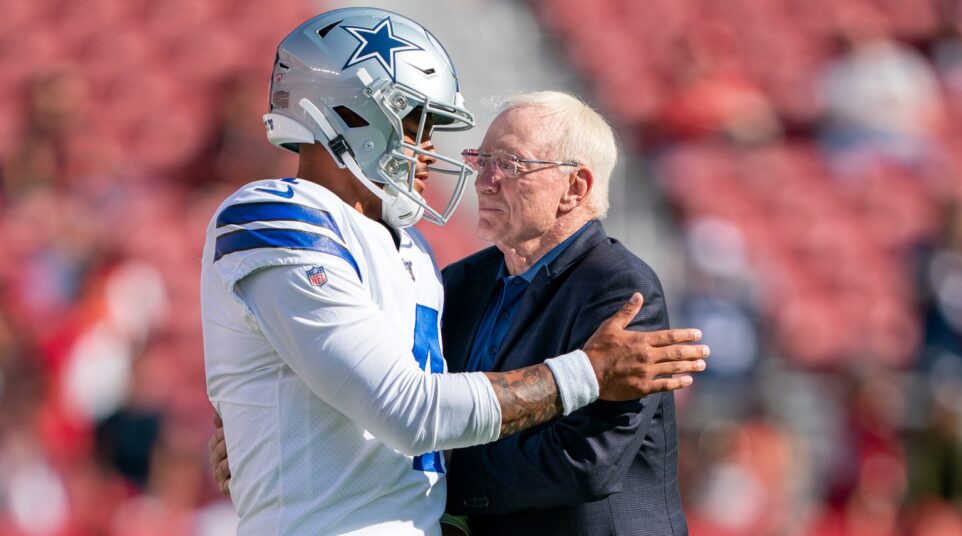
After Vegas Loss, Flyers Need to Make an Honest Self-Assessment at Halfway Point
[the_ad id=”102819″]
The Flyers limped to the halfway point of the season Thursday, completing Game No. 41 on their schedule with a 5-4 loss to the Vegas Golden Knights.
It was an entertaining game, if you like hockey eye candy.
It was a frustrating game if you are a member of the Philadelphia Flyers faithful.
That ran their record to 1-3-0 on the first four games of this season-long six-game road trip following Christmas.
The team is still clinging to the final playoff spot, and likely will be in the race for one of the wild card spots right up until the season’s end (there’s are seven teams within seven points of the playoffs at the midway point, but really, it’s probably going to come down to two of the Flyers, Florida Panthers, and New York Islanders getting in and one missing out.)
Still, despite being in a familiar spot in the standings, the Flyers hit the midway point at 22-14-5 with 49 points, which is a significant upgrade to last season’s 15-20-6 for 36 points.
So, things are still trending in the right direction when you take the full season into consideration.
Now, I’m not going to sit here and do some 5,000 word breakdown of each individual player and grade them on their first half. I was never a fan of that journalistic trope. You see the games. You know who’s been good and who hasn’t. Sometimes there needs to be a clarification, and I’m happy to jump in and help at those times, but for the most part, the fans are mostly smart enough to recognize who is producing and who isn’t.
Another narrative though is the disparity between games at home and games on the road, and it’s hard to argue with this data.
- HOME GAMES: 13-2-4 with a +35 goal differential, .789 points percentage (1st in the NHL)
- ROAD GAMES: 9-12-1 with a -26 goal differential, .432 points percentage (24th in the NHL)
- POWER PLAY AT HOME: 24.3% (8th in the NHL)
- PENALTY KILL AT HOME: 85.9% (5th in the NHL)
- POWER PLAY ON THE ROAD: 15.9% (20th in the NHL)
- PENALTY KILL ON THE ROAD: 76.5% (21st in the NHL)
- GOALS FOR PER GAME AT HOME: 3.79 (4th in the NHL)
- GOALS AGAINST PER GAME AT HOME: 1.95 (1st in the NHL)
- GOALS FOR PER GAME ON THE ROAD: 2.50 (23rd in the NHL)
- GOALS AGAINST PER GAME ON THE ROAD: 3.68 (29th in the NHL)
There’s often a disparity between home and road games as far as team success is concerned, but this big a difference is rare.
With these numbers one would think Fred Shero is coaching the team at home but Dave Hakstol is still coaching the team on the road.
And while that’s meant to be a joke, maybe it’s not far off from the truth.
No, this isn’t an indictment of Alain Vigneault and his coaching staff. If anything, it’s meant to praise them as good coaches. Instead, it’s an indictment of the talent depth of this Flyers team.
Let me explain.
Home teams inherently have an advantage in the sense that they can always get favored matchups on the ice as they get to make the last lineup changes during a stoppage in play. So, in-game, coaches always look for these little advantages and hope they can exploit them.
If a team is well-coached, and structured, these little advantage may only amount to a goal here and there, but it can be enough to make a difference in a game where the difference between winning and losing usually lies withing the small margins of gameplay.
Maybe the right matchup doesn’t result in a goal, but maybe it results in an offensive zone faceoff. Or maybe it results in a penalty drawn and a subsequent power play. Or maybe it results in a key faceoff. Or maybe it prevents the best players on the other team from getting the same number of high percentage chances that they are used to getting.
There are a lot of little advantages that good, smart coaching can exploit. It doesn’t always work out, but when you are given more of those chances, you are more likely to have them go your way and in the end, that leads to wins.
When you are on the road, the opposing team has those little advantages and visiting coaches have to try to get creative to take them away. Whether it’s a quick line change, or a more conservative, defensive style to counter what the opposition throws at you, you always try to find a way to diffuse more on the road and ignite more at home.
Some call it a chess match in coaching. I compare it to tennis. A home coach gets to serve. A visiting coach has to return serve. Yes, those returning serve sometimes break serve, but more often than not, the server has the advantage.
Why do I offer this as an explanation for the Flyers being one of the best teams in the sport at home and one of the worst on the road?
Because coaching can only help or hurt so much. Coaches can only make a team a little bit better or a little bit worse than what they truly are, and the Flyers are the poster child for this study this season.
They are not one of the best teams in hockey, so why are they so good at home? Coaching drives that bus. When the system in place works and the structure is sound, confidence grows. Get a crowd behind you and it grows even more. Get a goaltender who thrives off that atmosphere – like Carter Hart, who would be a Vezina candidate if he just started home games – and suddenly you have a team who is very hard to beat.
Meanwhile, on the road, where coaching influence is limited, and more susceptible to error, you have to rely on talent to try and find success and, well, that’s where this team still comes up a little short.
Frankly, they’re not as bad as their road performance would indicate. Again, if they’re not one of the best teams in hockey just because of the way they play at home, then they’re not one of the worst just because of road results.
But the road is where the warts show.
Sure, losing Oskar Lindblom for the season to a Ewing sarcoma diagnosis hurt off the ice, but it also hurt on it. He was on pace to be a 30-goal scorer for this team, and you don’t just replace that with organizational depth.
Also, no one saw the migraine disorder coming that has sidelined Nolan Patrick since the summer. A healthy Patrick and Lindblom would certainly improve the depth on this team.
Instead, the Flyers are relying on a bunch of guys who started the season in the AHL. Joel Farabee, Phil Myers, Misha Vorobyev and Nic Aube-Kubel are all currently on the roster. Morgan Frost, German Rubtsov, Andy Andreoff, Carsen Twarynski, Conner Bunnaman and David Kase all have seen time with the big club. Twarynski and Bunnaman started the season with the team, but their tenure here didn’t last long.
That’s 10 AHL guys in the first 41 games. That’s probably more than the Flyers would have liked. And while guys like Farabee, Frost and Myers are likely long-term pieces for this franchise, it’s obvious that they aren’t at the level where they can be difference makers just yet.
That leaves the Flyers a little light on the talent needed to really be much better than they are right now.
Lately, because the losses have piled up on the road, the complaints have been about poor defense, failing special teams and not enough scoring. Only the latter can be attributed to the depth of the roster as you can’t expect the same guys to score all the time and there needs to be some secondary offense provided.
But then you take it to the next level up – maybe the more experienced players aren’t as good as the team thinks/thought they were. Is that possible? Is it possible to say the Flyers self-evaluation needed or needs some fine tuning?
I listed both the past and present tense of that verb because it’s hard to put any kind of of weight on Chuck Fletcher’s shoulders for this roster construction because he’s only been here 13 months and most of the players in the organization were brought in by a prior regime.
Fletcher is playing the hand he’s dealt, and his additions to the roster have all been positive this season. They haven’t been needle-moving in a big way, but he was limited as to what he could do based on pre-existing contracts, future contracts for young players, and time needed to really assess what assets the organization has at its disposal.
But remember, we’ve been told for years that the Flyers had a top-end farm system. That a lot of these players were going to come into the NHL and be difference makers.
The jury is still out on a lot of young players, so yes, time is still needed, although the impatience of the fan base is completely understandable at this point.
But what if Travis Sanheim is what he is right now – a decent second pair defenseman? What if he doesn’t take that next step? What if we’ve seen the best Shayne Gostisbehere has to offer, and we’ll never see it at that level again? I’ve compared him to Mike Green in the past. Mike Green is still in the NHL, but he hasn’t been what he was in Washington for a decade. What if that’s what Ghost is destined to be? Just a guy?
What if when Patrick returns he remains as inconsistent as he was his previous two seasons? What if there is too much money tied up in Claude Giroux, Jake Voracek, Kevin Hayes and James van Riemsdyk that it collectively (not individually) does not equate to the $30 million or so that their salaries are taking up on the salary cap to take the Flyers to the next level without another influx of offense?
And what if Hart isn’t a savior in net, but is rather just a good, reliable goalie?
Can there still be a formula for the Flyers to succeed?
Vigneault and staff have squeezed about as much as they could from the Flyers in the first half. If they can match it in the second half, they finish with 98 points and a playoff spot, no question. That will be marked improvement – but will that be enough?
Chuck Fletcher has to be asking himself that right about now. Can he bring in the help necessary over the next six weeks before the trade deadline that can change things for the better depth-wise? Can he move a contract in one place to allow for the leeway to make a much-needed improvement somewhere else? Do the Flyers still have an embarrassment of riches in terms of assets attractive to other teams that will help Fletcher make those moves?
A lot will be determined in the next 18 days. There are nine games. Six of that at home where the Flyers are, as we pointed out, the best team in the NHL. But, the list of opponents are a who’s who of the NHL:
- at Arizona (beat the Flyers in Philly)
- at Carolina (ahead of the Flyers in the Metro)
- Washington (best record in the NHL)
- Tampa Bay (last year’s best team who has suddenly gotten hot again and passed the Flyers)
- Boston (the second-best record in hockey and last season’s Eastern Conference champion)
- at St. Louis (best record out West and the defending Stanley Cup champion)
- Montreal (chasing the Flyers, seven points behind them – probably the easiest game of this stretch)
- Los Angeles (beat the Flyers in LA on New Year’s Eve)
- Pittsburgh (ahead of the Flyers in the standings and a goal differential of +31 which is second-best in the NHL)
That get the Flyers to the All-Star break and their bye week and they resume play after the bye week with Pittsburgh again.
By that point, we’ll really know what this team is or isn’t.
[the_ad id=”103880″]





